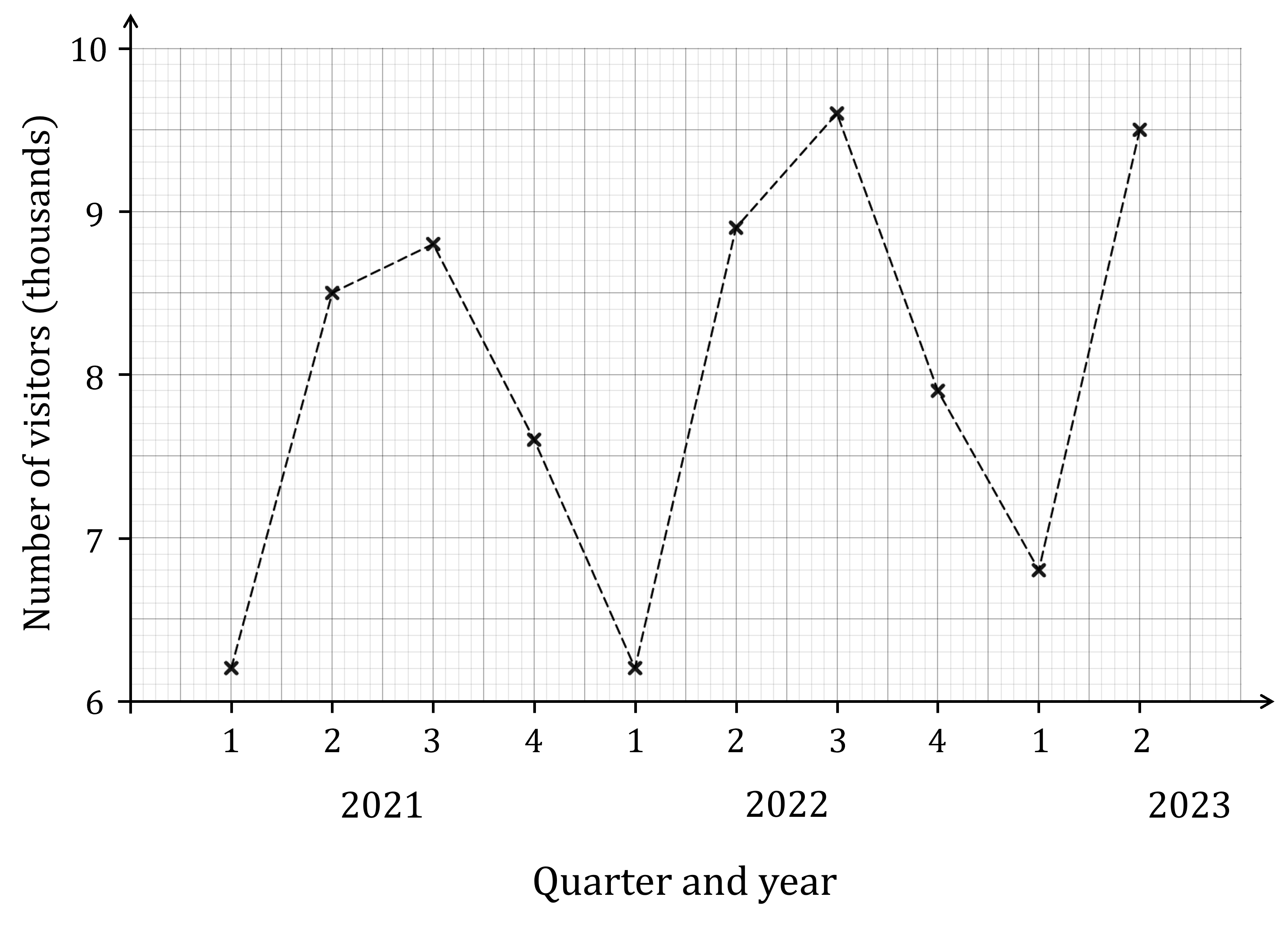Moving Averages (Edexcel GCSE Statistics)
Revision Note

Author
RogerExpertise
Maths
Moving Averages
What are moving averages?
A moving average is the average of a number of successive observations
This makes it easier to spot trends in data that varies cyclically or seasonally
The number of data points included in each average must cover one complete cycle
Usually this will mean one complete year
A four-point moving average is the most common moving average
e.g. for a year divided into four quarters or into four seasons
But you could be asked to calculate moving averages with a different number of points
To calculate moving averages
e.g. for a four-point moving average with 8 data points
the first moving average is the mean of the first four data points
the second moving average is the mean of the 2nd through 5th data points
the third moving average is the mean of the 3rd through 6th data points
the fourth moving average is the mean of the 4th through 7th data points
the fifth (and last) moving average is the mean of the 5th through 8th data points
Note that the group of data points for each moving average overlaps the group before and after it
Stop when you can no longer get a ‘full group’ for the next average
e.g. four points for a four-point moving average
The process is the same for moving averages with different numbers of points
A three-point moving average would find means for the 1st through 3rd points, 2nd through 4th points, etc.
A six-point moving average would find means for the 1st through 6th points, 2nd through 7th points, etc.
How do I plot moving averages on a time series graph?
It is useful to plot moving averages onto a time series graph
This makes it easier to draw accurate trend lines
Each moving average should be plotted at the midpoint of the time intervals it covers
e.g. for a four-point moving average
the average for the first 4 points will be plotted halfway between the 2nd and 3rd points
the average for the 2nd through 5th points will be plotted halfway between the 3rd and 4th points
etc.
You should not join up the points for moving averages
Exam Tip
Remember not to join up the moving average points on a time series graph
This is different from the data points, which are joined up
Worked Example
The following table records the number of visitors to Wayne’s World of Widgets for 2021, 2022 and the first two quarters of 2023:
Year | 2021 | 2022 | 2023 | |||||||
Quarter | 1 | 2 | 3 | 4 | 1 | 2 | 3 | 4 | 1 | 2 |
Visitors (thousands) | 6.2 | 8.5 | 8.8 | 7.6 | 6.2 | 8.9 | 9.6 | 7.9 | 6.8 | 9.5 |
This data is also represented on the following time series graph:

Calculate the four-point moving averages for this data and plot them on the time-series graph.
The first moving average will be the mean of the first 4 data points (i.e. the 4 quarters of 2021)
Remember, to find the mean add the values together and divide by the number of values
The next moving average will be the mean of the next group of 4 data points (i.e. quarters 2, 3 and 4 of 2021 and quarter 1 of 2022)
Continue this process to find all 7 moving averages
Now plot these on the time series graph
Remember, these need to be plotted at the midpoint of the time intervals each one covers
So the first point will be halfway between quarters 2 and 3 of 2021
The second point will be halfway between quarters 3 and 4 of 2021
And so on
Also remember not to join these moving average points up!


You've read 0 of your 0 free revision notes
Get unlimited access
to absolutely everything:
- Downloadable PDFs
- Unlimited Revision Notes
- Topic Questions
- Past Papers
- Model Answers
- Videos (Maths and Science)
Did this page help you?